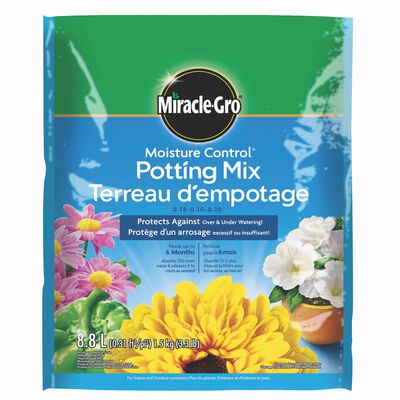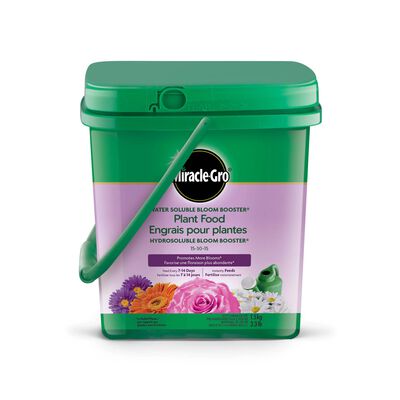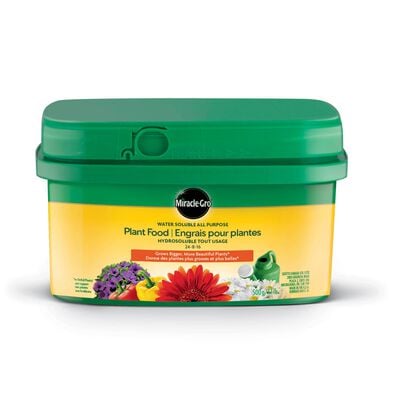
Ultimate Guide to Summer Flowers
Our favourite flowers and proven gardening tips for a stunning summer floral display
Are you dreaming of a summertime filled with sunny days, refreshing breezes, and a flower garden bursting into bloom? While we can't guarantee perfect weather, this guide will help you choose some of the best flowering plants for your summer garden. Beloved by gardeners for their eye-catching blossoms—as well as their extended bloom times—these tried-and-true summer flower plants will add colour and texture to your landscape throughout the summer and even into early fall.
Annuals, Perennials, or Both?
Gardeners have lots of options when choosing and planting summer flowers, whether in flower beds or containers. Most summer flower plants fall into two main types:
- Annual flowers complete their entire life cycle in just one season. They can be planted any time after the danger of frost has passed. Annuals bloom continuously before dying at the end of the summer.
- Perennial flowers come back year after year, dying back to the ground as winter approaches. Their root systems remain dormant underground until the next spring, when they awaken and produce new growth. Spring-flowering perennials are planted in the fall, to flower at the start of the next season, while late-summer or fall-flowering varieties are planted in the spring. Perennials typically produce short bursts of blooms at certain points in the growing season, but they usually won't flower the first season after they're planted.
Annuals and perennials live happily together in any garden among other landscape plantings, like trees and shrubs. The number of flower combinations you can create is limited only by your imagination—and your growing conditions, of course!
No matter what plants you choose, or where you choose to grow them, your new summer flowers will need ideal soil conditions to establish a healthy root network. Start them out strong by preparing your growing area before you add your plants. Blend in-ground soil with Miracle-Gro® All Purpose Garden Soil in your flower beds before planting, to ensure proper drainage and a 3-month, continuous supply of key nutrients. If you're a container gardener, fill your pots, window boxes, and hanging planters with moisture-absorbent, nutrient-rich Miracle-Gro® Moisture Control® Potting Mix, which can feed for up to 6 months.
What Are the Best Flowers to Plant in Summer?
Though many gardeners consider annuals to be their go-to solution for a flower-filled summer, perennial flowers that bloom all summer long are more common than you'd realize. Many will begin blooming in mid to late summer and continue through fall, like sweet Shasta daisies and black-eyed Susans, striking blue and purple asters, pollinator-friendly purple coneflowers, and stunning yellow-gold Stella D'Oro daylilies. (They're great flowers for cutting and bouquets, too.) Hardy "Crane's Bill" geraniums in shades of maroon to purple, sunny yellow Sundrop primroses, and spiky blue delphiniums will also bloom for weeks at a time, providing lush, mid-height filler between taller plants and ground covers. Creeping phlox, a flower-dense ground cover, blooms for weeks on end and creates a satisfying carpet of white, pink, purple, or blue flowers that creeps (hence the name) over rocks, walls, and other garden features.
Annual flowers, with their never-stop-blooming habit, are an easy way to create a colourful flower garden, either all on their own or in combination with perennials. Snapdragons flower impressively in late spring and bloom through early fall. Bright orange zinnias grow quickly and produce bright, full flowers for cutting. Globe amaranth, in rich burgundy, grows stalks topped with clover-like, papery globes suitable for cutting and drying. Easy-care petunias, in a dazzling variety of colour and sizes, bloom from May to September and work as a mounded ground cover or a spilling container accent. New Guinea impatiens flower early and aren't too picky about how much sun they're given, from partial shade to full sun. Perky, reliable marigolds brighten up garden edges. Drought-tolerant, multi-coloured moss roses creep across the ground and create a pleasing polka-dot effect with double flowers.
You can plant any annual summer flower plants in spring and early summer for months of glorious colour. Remember, though, that newly planted perennials will not bloom in their first year. If you're establishing your first summer flower garden and you've chosen perennials, be sure to plant some annuals as well, to ensure you get some blossoms this season.
How do I Landscape with Flowers?
Mix and match annual and perennial summer flower plants to give your flower beds and containers spectacular colour, texture, and visual interest that will last the entire season. While a perennial is "resting," annuals can add a pop of colour and fill in the gaps until other blooms kick in.
A variety of plant heights, textures, shapes, and colours of blooms will add dimension and interest to your garden. Growing habits, like filling, mounding, spreading, climbing, and spiking, should also be considered when you choose plants. Use your imagination, along with these simple guidelines, to create pleasing, personalized garden landscape designs and container arrangements:
- Place taller plants in the back of your flower beds or containers.
- Fill the central parts of your flower beds and containers with medium-height and mounding plants.
- Use ground covers and plants that like to "creep" or "spill" for the front of your flower beds or containers.
- Plant shorter, more compact flowers as edgings.
- Vary colours—of both blossoms and foliage—throughout your garden.
- Ensure enough space between plants for them to grow and spread during the season.
A garden can be much more than just plants, too. You can also incorporate features, like stones, trees, benches, and paths, as well as decorative elements, such as bird baths, statuary, and lighting.
How Do I Care for My Summer Flower Garden?
Performing regular garden upkeep will ensure the continued health and growth of your flowering plants throughout the summer.
- Adequate moisture and nutrition help keep plants strong and prevent problems. Don't just rely on regular rain to water your summer flower plants! Water regularly, whenever the top inch of soil feels dry, and consider topping your soil with a layer of mulch to keep moisture in and weeds out. (Containers, which dry out faster, will need watering at least once daily during hot summer months.)
- Every week or two, add Miracle-Gro® Water Soluble Bloom Booster® Flower Food to the water in your watering can to help replace nutrients that have been depleted from the soil, plus encourage bigger, more abundant blooms. Or, if you plan to water any edible plants while you're at it, you can use Miracle-Gro® Water Soluble All Purpose Plant Food on them both. (Don't forget to read and follow the directions!)
- "Deadhead" your annuals to encourage continued growth of more flowers all season long. With annuals, use a pair of snips or your fingers to pinch off the entire spent bloom. You don't have to deadhead perennials, but you can snip or pinch off dead flowers to make plants look more pleasing and encourage bushier growth. For daisies and other flowers on tall stems, remove spent flowers by cutting the entire stem near the base.
- Keep up with weeding. Don't let weeds steal precious moisture and nutrients from the soil around your plants.
- Remove brown or yellowed leaves as you see them, and watch for tell-tale signs of pest damage like holes, spots, or insects on foliage.
If there's any point in the summer season where you feel your flower garden is at a lull, don't despair. It's never too late to add a burst of colour—just plant a few more annuals.



